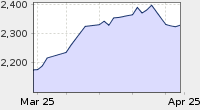Aquilo de que se fala quando se fala de mudança mudou:
"In 1975, more than 80% of US corporate assets were tangible assets, things like factories, equipment and real estate... But now that situation has flipped and more than 80% of corporate assets are intangible. When we talk about change today we are usually talking about changes in people themselves, in how they think and how they act.
...
To effectively tackle transformation today, we need to understand that the change environment has shifted significantly since the 1980s and 90s, when the traditional change management frameworks were first being formed.
...
Just like you wouldn’t use early languages like FORTRAN or COBOL to design software today, we can’t merely port change ideas from the same period and expect them to be effective in today’s organizations."
A diferença entre transformações estratégicas e comportamentais:
Sobre transformações estratégicas:
"Strategic transformations are leader-led and consensus driven. Clear, early and frequent communication is crucial to help everyone understand the change and participate in its success.
...
In a strategic transformation like the one at Intel in the 80s, leadership has full power to push the transformation forward. They can approve investments, negotiate with partners and implement decisions. Therefore, it is important for management to communicate clearly from the start, informing the organizations what decisions are being made and why."
Sobre transformações comportamentais:
"Unlike in a strategic transformation, leaders can't dictate what people think and do the same way they can make decisions about investments and partnerships. Behavior transformations are also guaranteed to incur resistance. That's why leaders need to pursue behavioral transformation as something more akin to a social movement than to a strategy session.
What leaders need to recognize is that the vast majority of transformations today are not strategic and consensus-driven, but focused on shifting behaviors and coalition-driven."
Em 1975, 80% dos activos corporativos eram tangíveis (fábricas, equipamentos, imóveis). As transformações envolviam mudanças estratégicas nesses activos. Hoje, 80% dos activos são intangíveis (habilidades, conhecimento, comportamentos), o que requer foco no como as pessoas pensam e agem.
As ferramentas tradicionais de gestão da mudança, criadas para lidar com activos tangíveis, são inadequadas para o contexto actual.
Trechos retirados de "Communicate A Vision To Shift Strategy, Shape Networks To Change Behavior"

%2016.58.jpeg)
%2006.21.jpeg)























Sem comentários:
Enviar um comentário